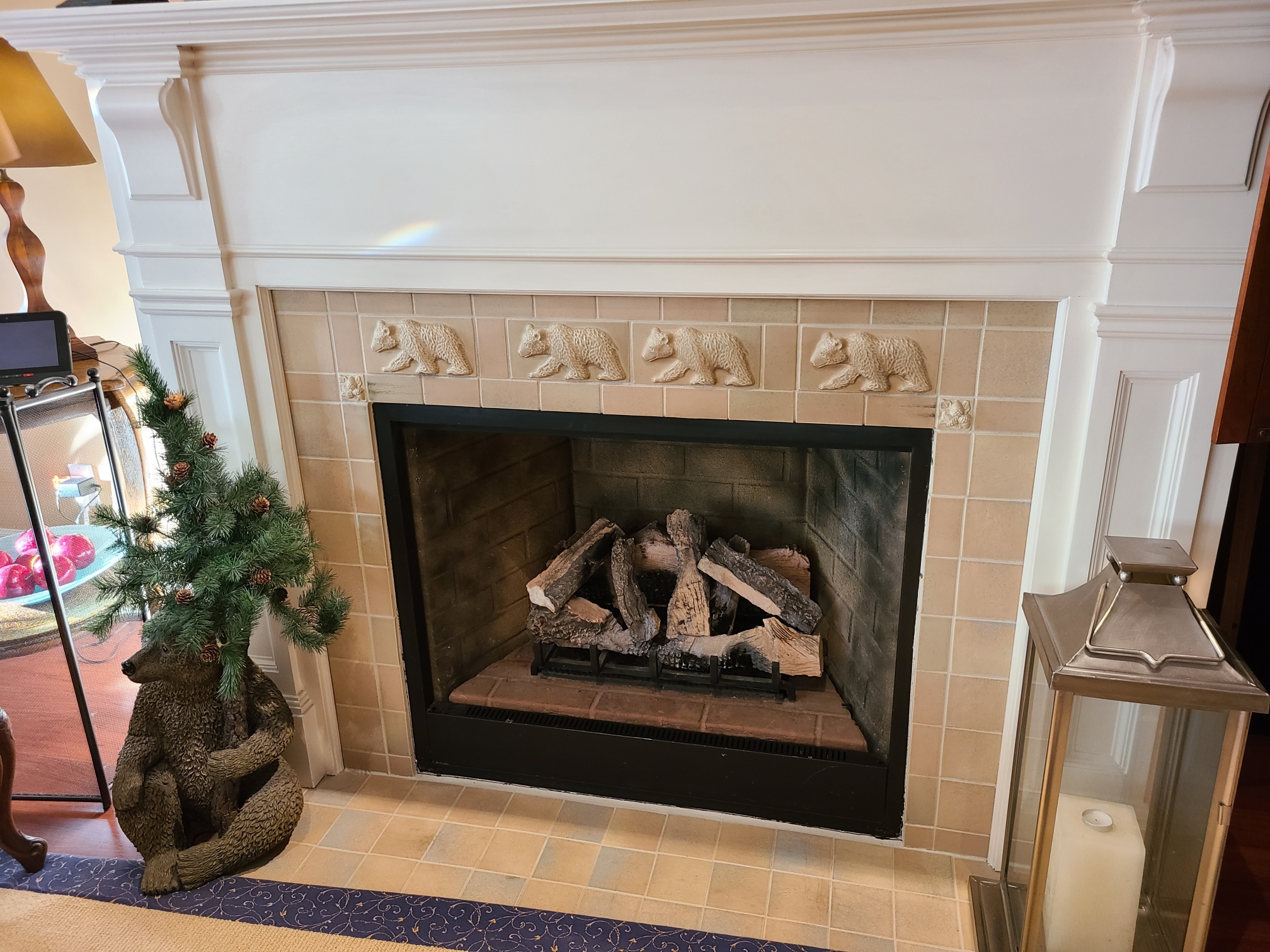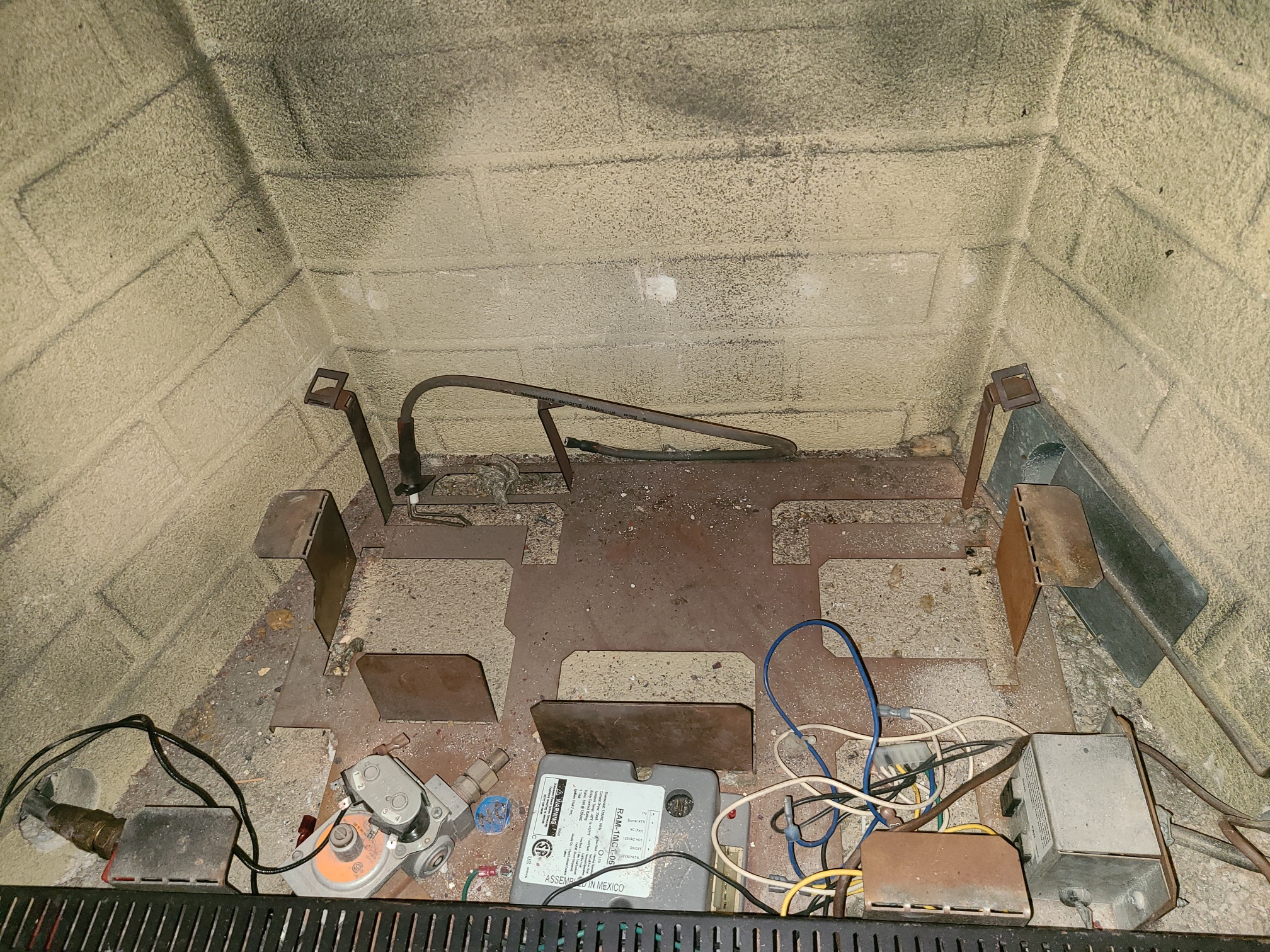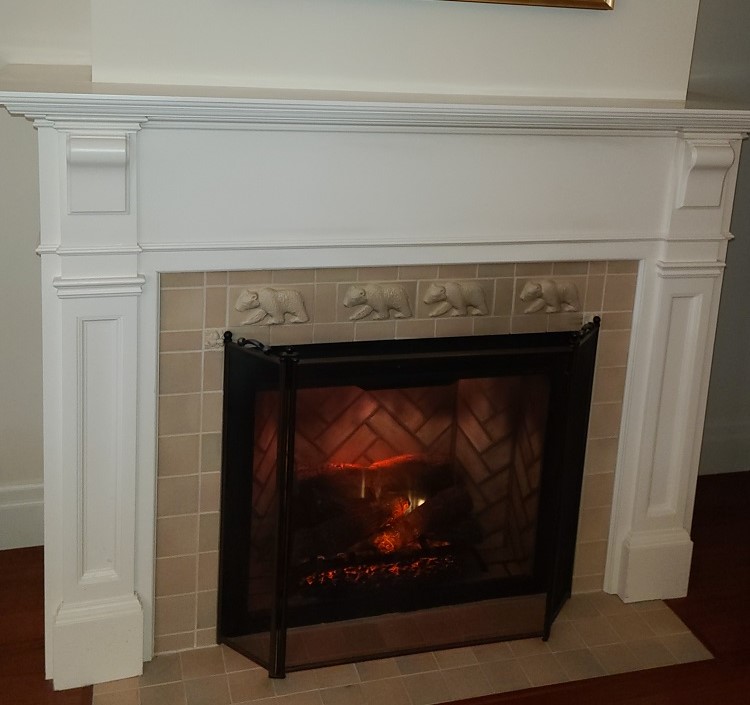As more homeowners become aware of the advantages of electric fireplaces over gas fires, we are increasingly being asked about how to convert a gas fireplace to electric. While we don’t do this work, we have been part of many projects where this is happening. Depending on what other work is going on in your home, the fireplace conversion can be handled by a general contractor who brings all the necessary trades, or you will need to hire individual trades yourself. If you are the one hiring trades, it’s helpful to understand the steps, so you can find the right people to do the work. What follows is an overview of what needs to happen in order to convert a gas fireplace to electric.
How to convert a gas fireplace to electric: Close the gas line
This is not a do-it-yourself project! It requires a licensed gas fitter who is experienced with gas fireplaces. We suggest that you look up ‘gas fireplace installers’ on the internet; anyone who installs gas fireplaces can also remove them. You could also check in with your favourite HVAC contractor, to see if this is something they do. They will shut off the gas supply to the fireplace and disconnect the gas line, so the gas insert, or gas logs, may be removed.
How to convert a gas fireplace to electric: Disconnect the venting
Before a gas insert may be removed from the fireplace, its venting will have to be disconnected or cut. If the gas insert was placed in a wood-burning fireplace, the vent pipe will likely be in the chimney, and it can stay there after disconnection. Other gas inserts have been vented out the side of the home, and a decision will have to be made about whether to leave the unused terminus apparatus in place, or to remove it. If you remove it, will you be able to repair the exterior covering? It’s not unusual to leave the venting terminus in place to avoid the need to find spare brick or siding to make repairs. On many homes, the gas fireplace has been built into a bump-out on the exterior of the home, rather than having the full bulk of the insert on the interior of the home. These may also be left in place. We do recommend that you pack insulation around the place where the old gas vent enters the interior wall, to keep cold air from invading the room.



How to convert a gas fireplace to electric: Remove the gas insert
Some gas inserts will slide right out of the fireplace, once the gas line and venting are disconnected. However, if you have a built-in insert, where the stone surround comes partially over the firebox, the stone around the insert may have to be broken to remove the gas insert. This may affect your plans for how you want to remodel the fireplace. If you were hoping to NOT remodel the fireplace, and your insert doesn’t just slide out, your plans will have to change. If you have a built-in insert, and you want to preserve the surrounding tile or stone, we have seen situations where only the guts of the gas insert were removed and interior metal cut away to make space for a new electric insert. Note: removal of the actual insert, or cutting away of the interior components, may not be something your gas fitter is willing to do. Be prepared to hire a general contractor or handyman to do this part, unless you have the skill and tools to do it yourself.
How to convert a gas fireplace to electric: Run a new electrical line
Once the old gas insert and venting have been safely removed, and the gas line has been capped, you are ready to begin preparations for a new electric insert. An electric fireplace obviously requires power, and it’s best to run a dedicated electrical line for that. Whether you run 120 volts or 240 volts will depend on the electric insert you select. You may find that your old gas insert has an electrical connection that will be left in the opening after you remove the insert. However, it’s most unlikely that this will have sufficient power for your new electric insert. Gas fireplaces require power for starters and blowers, neither of which requires a dedicated circuit. You can have an electrician test any existing electrical to be sure it’s not on its own circuit breaker, but be prepared to run a new line if it’s not. Note: Electrical work is not a do-it-yourself project; we always recommend that you hire a licensed electrician.
The new electrical line can be brought in through the bottom of the fireplace opening, from the basement or garage space below. If you don’t want to break a finished ceiling in the room below, you could also bring power into the back of the fireplace opening, from the exterior of the house. This would require running a conduit around the house from the electrical panel to the fireplace. You will need to speak to your electrician to find out which path makes the most sense, and creates the least damage to finished spaces.
How to convert a gas fireplace to electric: Measure the opening
While you are dealing with electrical requirements, you can also be looking for a new electric fireplace insert. If your gas insert was placed in an old wood-burning fireplace, the masonry opening will have size limitations created by its shape. Masonry openings typically are wider at the front than they are at the back, and they start getting narrower quite close to the front of the opening. For this reason, you will need to measure the width and height of the front of the opening, as well as the width and height part-way into the opening. Measuring the very back of the opening is not helpful, as electric inserts are not that deep, and will not be going all the way to the back of the opening. Generally, the interior measurements should be taken 10 – 12 inches from the front of the opening.
If your gas insert was always a gas fireplace, the cavity left behind by its removal will usually be quite generous in size, and not tapered toward the back. If this is the case, measure the width and height of the opening, as well as the overall depth. While gas inserts are deeper than electric inserts, and depth is generally not an issue when retrofitting an electric insert into a gas opening, we still like to know this measurement.
How to convert a gas fireplace to electric: Find the insert that fits best
For a masonry fireplace, where the opening gets smaller inside, the replacement insert will have to be smaller than the front of the opening, and a trim kit will cover the gaps around the insert. Unfortunately, there isn’t a ‘standard’ fireplace size, for which manufacturers can all make an electric insert. For this reason, accurate measurements are critical. You want to find the largest electric insert that you can fit into the opening with the smallest gaps. But there will almost always be gaps. For this reason, many electric inserts have trim kits available. Because electric fireplaces are zero-clearance, you can also have a trim made with wood, if you prefer.
If the gas fireplace was never part of a masonry fireplace, then the hole left behind by its removal will be larger and more open than a masonry opening. This may give you more options for electric inserts, but you should still expect to use a trim kit, because it will still be challenging to find an electric insert that’s a perfect fit.
With either fireplace opening, if you are remodeling the surrounding walls, then you can remake the hole to fit the new electric insert, and avoid adding a trim.
Stylish Fireplaces knows that adding a fireplace to your home can be challenging. With an electric fireplace and their NFI Certified Hearth Design Specialists, it’s easy to create a space you’ll love to share with family and friends. Check out all the options and connect with their experts for help to find the perfect electric fireplace for you. You’ll live stylishly ever after.